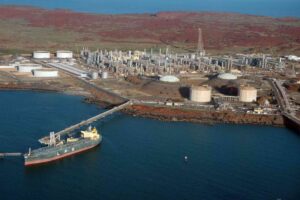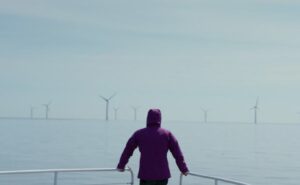The era of cheap coal power in Australia is over; brought to an abrupt end by ever cheaper solar and wind power generation, and by rising coal prices, according to Bloomberg New Energy Finance’s Kobad Bhavnagri.
And, Bhavnagri told the 6th Australasian Emissions Reduction Summit in Melbourne on Wednesday, while this was expected, it has happened more quickly than even the most optimistic predictions.
“This is something that we only projected would occur in the mid 2020s. But the change in economics, particularly the increase in domestic coal pricing, has meant that this tipping point is already upon us today,” Bhavnagri said.
It’s not exactly news – at least not for regular RenewEconomy readers – but it bears repeating, with the federal election less than two weeks away, and the Liberal National Party continuing to insist that coal power is cheap, and fundamental to the health of Australia’s economy.
Certainly, the fact that solar and wind have become the cheapest forms of new bulk electricity supply in almost every major energy market around the world – including Australia – is well accepted, including by the Australian Energy Market Operator.
“It’s cheaper to build new solar and new wind than it is to build new coal or new gas,” Bhavnagri reminded the conference, echoing the findings of a joint CSIRO and AEMO study, and of its own reports.
“It’s also cheapest, now, to build bulk dispatchable capacity from a wind farm, coupled with a battery, than it is to build a new coal-fired power station – or gas.
“The cost of building new peaking generation in Australia now favours batteries. For short durations, for an hour or so, a battery is cheaper than building an open cycle gas turbine or a gas reciprocating engine.”
But the fact that Australia’s existing coal power fleet is – already – no longer the cheapest form of energy generation has not yet sunk in, Bhavnagri says, even against the backdrop of the global climate emergency.
“A phenomenon that has not been well understood or well publicised is that the era of cheap coal in Australia has really come to an end. And that is true even for the existing generation assets.
“The cost of generating power from black coal in Australia has risen … between 50-150 per cent. Australia’s fleet of coal-fired generators … their prices have increased markedly, and this is potentially the biggest driver of the increase of wholesale electricity costs that we have experienced in this country,” Bhavnagri said.
” it’s a very similar phenomenon to that which has unfolded with natural gas. Increasing prices for thermal coal exports have now found their way into our fleet of generators, because infrastructure connecting them to export markets, railroads, has become better –particularly in NSW and Newcastle – and that has pushed the price of generating power from coal-fired electricity up.”
This conclusion is also reflected in AEMO data, and in its newly released Quarterly Energy Dynamics report, that found the biggest reason for record prices was the rising cost of coal and gas generation. In the last quarter, coal was bid at prices of more than $100/MWh for more than half the time.
“Couple that with the decline we are seeing in the price of wind and solar, and we now are at a very significant tipping point where it is cheaper in many places in Australia now, to build new wind or new solar, than it is to operate and generate power from shovelling coal into an existing coal-fired power station,” Bhavnagri said.
Perhaps one of the most remarkable aspects to this outcome for coal in Australia, is that it has happened despite a federal government that has done everything it can to prop up the coal industry, and to delay any sort of ambitious climate action or renewable energy build-out.
By contrast, says Bhavnagri, in the world’s “forward thinking markets,” the decline of global coal markets have been coupled with “concrete policy” to phase out existing coal-fired power stations.
What could be achieved in Australia with a government that understands this – or at least, accepts it?
Happily, Kevin de Leon, president of the Californian State Senate, was on hand to answer this very question, and to remind the Summit that it is possible to decouple major economies from carbon. But it takes strong leadership.
“The severe consequences of climate change are happening right now, before our very eyes.
“Please take a lesson from California. The facts and science are literally undeniable. We don’t need another Nobel Prize winner to declare it. We have enough scientific evidence.
“This is no longer about science. This is now about leadership, first and foremost. This is a political issue that demands the right leadership.
“With the upcoming election, Australia has a unique opportunity to become a world leader in climate action.”
De Leon also noted that California – the world’s fifth-largest economy – now has the “least carbon intensive economy in the world.” And it achieved this status “regardless of who is in the White House,” and in the face of “considerable criticism, that we would kill employment.”
Of course, this did not happen, and clean energy now employs more than 500,000 people in the state, which de Leon says is ten times more jobs than there are in coal mining in all of America.








